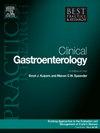人工智能与超声内镜在胆胰病变早期检测中的结合:现状与展望
IF 3.2
3区 医学
Q2 GASTROENTEROLOGY & HEPATOLOGY
Best Practice & Research Clinical Gastroenterology
Pub Date : 2025-02-01
DOI:10.1016/j.bpg.2025.101975
引用次数: 0
摘要
人工智能(AI)在内镜超声(EUS)中的整合代表了胆道胰腺病变早期检测和管理的革命性进步。本文综述了人工智能增强EUS (AI-EUS)诊断实性和囊性胰腺病变以及胆道疾病的现状。人工智能驱动的模型,包括机器学习(ML)和深度学习(DL),在诊断准确性方面有了显着提高,特别是在区分胰腺导管腺癌(PDAC)和良性疾病以及胰腺囊性肿瘤的表征方面。先进的算法,如卷积神经网络(cnn),可以实现精确的图像分析,实时病变分类,并与临床和基因组数据集成,以实现个性化护理。在胆道疾病中,人工智能辅助系统增强了胆管的可视化,简化了诊断工作流程,最大限度地减少了对操作者的依赖。新兴应用,如人工智能引导的EUS细针穿刺(FNA)和活检(FNB),提高了诊断率,同时减少了错误。尽管取得了这些进步,但挑战依然存在,包括数据标准化、模型可解释性和有关数据隐私的道德问题。未来的发展目标是整合多模式成像、实时程序支持和预测分析,以进一步完善AI-EUS的诊断和治疗潜力。人工智能驱动的EUS创新有望彻底改变胰胆道诊断,促进早期检测,提高准确性,并为胃肠道肿瘤及其他领域的个性化医疗铺平道路。本文章由计算机程序翻译,如有差异,请以英文原文为准。
Integrating artificial intelligence with endoscopic ultrasound in the early detection of bilio-pancreatic lesions: Current advances and future prospects
The integration of Artificial Intelligence (AI) in endoscopic ultrasound (EUS) represents a transformative advancement in the early detection and management of biliopancreatic lesions. This review highlights the current state of AI-enhanced EUS (AI-EUS) for diagnosing solid and cystic pancreatic lesions, as well as biliary diseases. AI-driven models, including machine learning (ML) and deep learning (DL), have shown significant improvements in diagnostic accuracy, particularly in distinguishing pancreatic ductal adenocarcinoma (PDAC) from benign conditions and in the characterization of pancreatic cystic neoplasms. Advanced algorithms, such as convolutional neural networks (CNNs), enable precise image analysis, real-time lesion classification, and integration with clinical and genomic data for personalized care.
In biliary diseases, AI-assisted systems enhance bile duct visualization and streamline diagnostic workflows, minimizing operator dependency. Emerging applications, such as AI-guided EUS fine-needle aspiration (FNA) and biopsy (FNB), improve diagnostic yields while reducing errors. Despite these advancements, challenges remain, including data standardization, model interpretability, and ethical concerns regarding data privacy. Future developments aim to integrate multimodal imaging, real-time procedural support, and predictive analytics to further refine the diagnostic and therapeutic potential of AI-EUS.
AI-driven innovation in EUS stands poised to revolutionize pancreatico-biliary diagnostics, facilitating earlier detection, enhancing precision, and paving the way for personalized medicine in gastrointestinal oncology and beyond.
求助全文
通过发布文献求助,成功后即可免费获取论文全文。
去求助
来源期刊
CiteScore
5.50
自引率
0.00%
发文量
23
审稿时长
69 days
期刊介绍:
Each topic-based issue of Best Practice & Research Clinical Gastroenterology will provide a comprehensive review of current clinical practice and thinking within the specialty of gastroenterology.

 求助内容:
求助内容: 应助结果提醒方式:
应助结果提醒方式:


